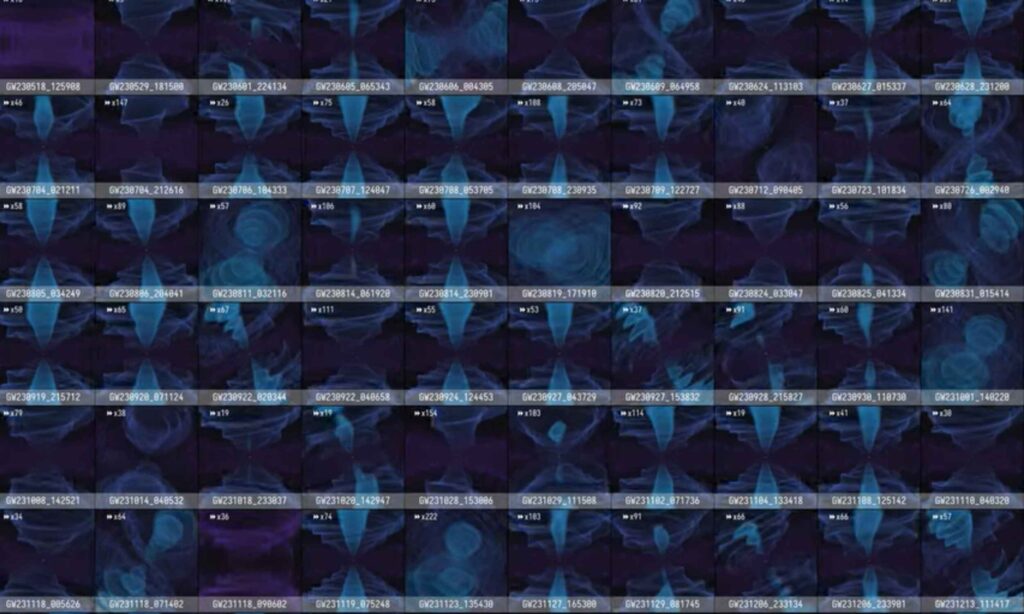
An international network of observatories has released version 4.0 of its catalog, listing 128 new black hole merger candidates detected during the first phase of the fourth observing run, O4a. This update significantly expands the list of black hole and neutron star collisions identified by listening for gravitational waves, the tiny ripples in space and time. These findings highlight the effectiveness of gravity-based listening in detecting cosmic events that traditional telescopes might miss.
The latest catalog, known as GWTC 4.0, is not merely a compilation of names and numbers. It provides detailed measurements for a wide array of confirmed detections and flags events that require further examination. An accompanying paper offers an open data set, including main recordings, instrument details, and notes on data quality, allowing scientists to verify findings independently.
The Importance of Black Hole Mergers
One of the leading scientists in this field is Dave Reitze of Caltech, who serves as the executive director of the Laser Interferometer Gravitational-Wave Observatory (LIGO). Reitze has dedicated years to enhancing the detectors’ sensitivity to fainter and faster signals. The increase in detected events enables more rigorous testing of how nature constructs massive objects. As the catalog grows, patterns in mass and spin become more apparent, offering insights into the likely origins of these systems.
These patterns indicate that some black hole systems form in crowded star clusters, while others develop in isolated pairs. More precise measurements reduce the guesswork in theoretical models, transforming catalogs into valuable insights about stellar life cycles.
Record-Breaking Discoveries
Among the many detections, a collision recorded on November 23, 2023, stands out. This event resulted in a black hole approximately 225 times heavier than the Sun, marking the largest confirmed through gravitational waves. The component masses challenge simple models of single star collapse, suggesting that at least one of the black holes may have grown from previous mergers.
“This observation once again demonstrates how gravitational waves are uniquely revealing the fundamental and exotic nature of black holes throughout the universe,” said Dave Reitze.
This perspective underscores the impact a single extreme event can have on reshaping theories about the formation of massive black holes. The event will anchor new studies on spin and environment, providing theorists with a clear target for testing models of black hole growth.
Detecting Black Hole Mergers
A binary black hole merger emits a distinct pattern in frequency and time, allowing scientists to determine the masses of the two objects and the final remnant. Interferometers, devices that split laser light along two perpendicular arms, play a crucial role in this process. They detect passing gravitational waves by measuring the resulting changes in the interference pattern.
The measured quantity, known as strain, represents a fractional change in length. Detectors record this strain tens of thousands of times each second, with patterns in the strain mapping to the system’s mass and spin. Improved calibration and reduced noise enhance the accuracy of these inferences.
What Comes Next
The fourth observing run is set to continue into 2025, providing more weeks of data for analysis. The team will update the catalog with new results as they pass internal checks. The collaboration also issues public alerts for candidates in real time via NASA’s General Coordinates Network, aiding telescopes in searching for any accompanying light or particle signals.
New detections will continue to fill in the picture of how massive objects form and behave, adding more detail about their size, motion, and interactions with their surroundings. These discoveries also allow scientists to test whether the laws of gravity hold true under extreme conditions.
As researchers study the signals more closely, they will look for subtle effects that occur when light or waves pass near very heavy objects, potentially bending and brightening what is observed from across the universe.
Explore the Data Yourself
The open data set is available for anyone to download, with tutorials from the community offering guidance. Students, teachers, and hobbyists regularly develop tools to explain key concepts and steps. The interactive “Masses in the Stellar Graveyard” visualization plots black holes and neutron stars discovered through gravitational waves alongside those found using light.
Comparing these discovery methods reveals each one’s strengths, with gravitational waves excelling at detecting heavy, dark pairs that do not emit light. As the catalog expands, this plot fills in new areas of parameter space, mapping how stars live, collide, and end.
Like what you read? Subscribe to our newsletter for engaging articles, exclusive content, and the latest updates. Check us out on EarthSnap, a free app brought to you by Eric Ralls and Earth.com.







